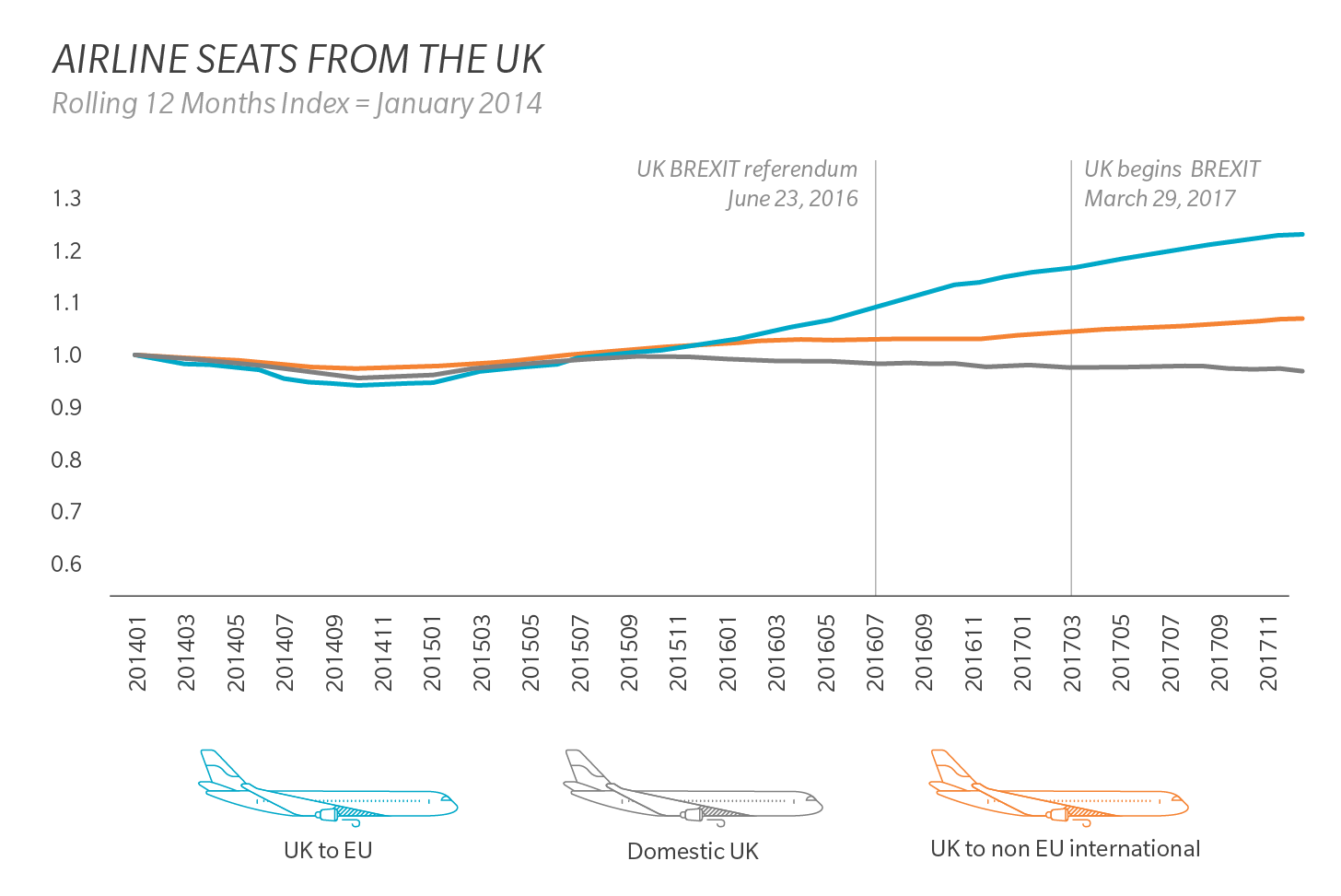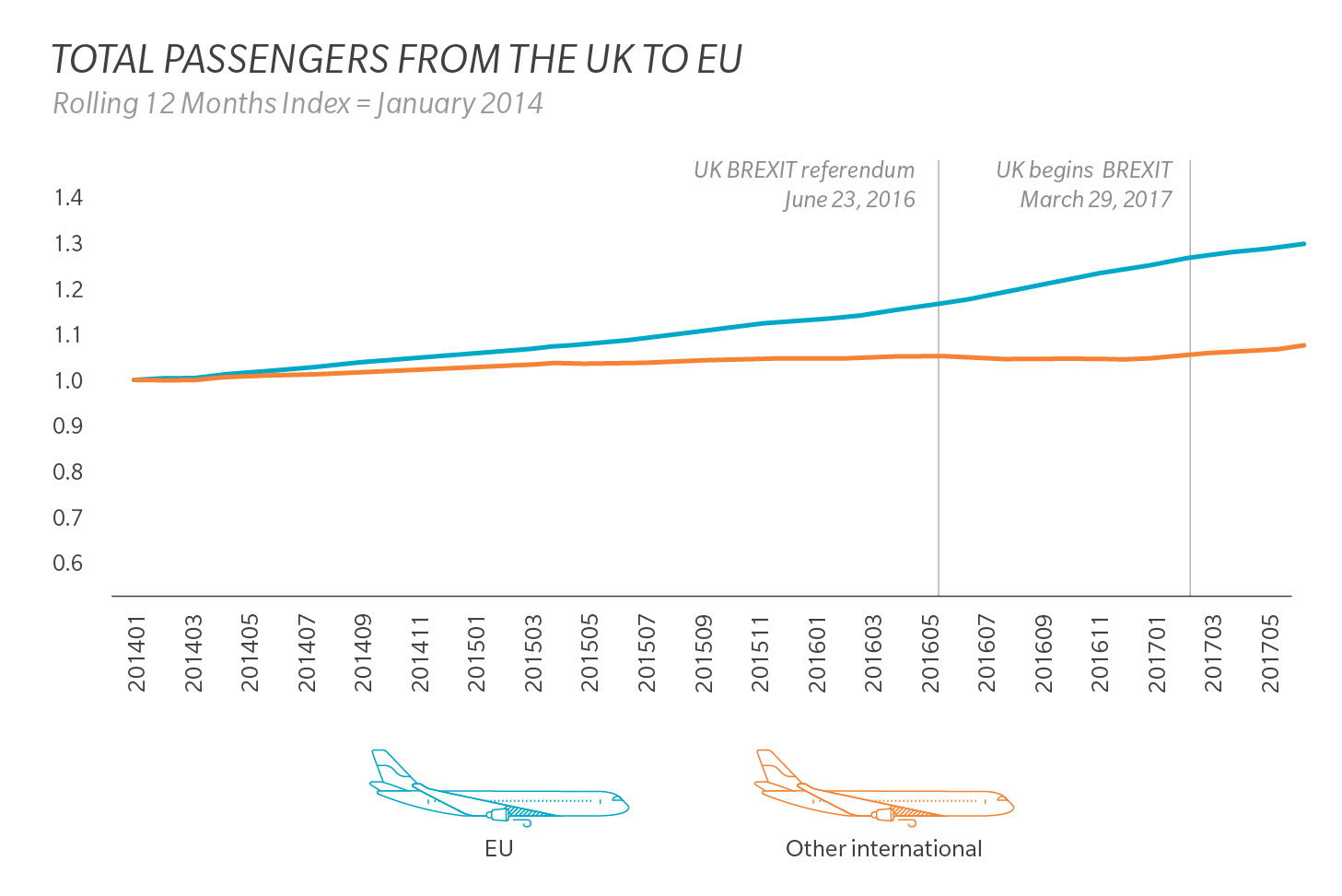This increase in capacity has been relatively matched by increases in passenger traffic as reported by the UK Civil Aviation Authority (CAA). It is unclear what impact Brexit will or has had on the UK markets, if any. Certainly, new aircraft deliveries have added capacity and value of the British Pound has increased passenger demand.
An analysis of a rolling 12 month total of scheduled airline seats from the UK to the remaining EU countries is up 19.0% since 2014. After a slight decline between 2014 and 2015, seats have increased at significant rate. The increases began in late 2014 and matched gains experienced in all international (EU and Non-EU) markets until a few months prior to the Brexit referendum on June 23, 2016. In the months leading up to the referendum, capacity from the UK to the EU began increasing at a greater rate than the rest of UK market. Airline seats between the UK and the EU have increased an additional 10.4% since the referendum (YE June 2017 versus YE June 2016).
The increase in capacity has been largely produced by the region’s low cost carriers such as Ryanair and easyJet, however the UK’s largest airline, British Airways, has also increased capacity by 10.0%.

Passenger traffic has also increased between the UK and the EU. UK CAA monthly statistics indicate passengers have increased 27.8% (YE April 2017 versus YE June 2014). During the same period, non-EU international traffic has increased only 6.8%. Passenger traffic has increased 8.7% since the referendum.

.jpg.imgix.banner.jpg)



